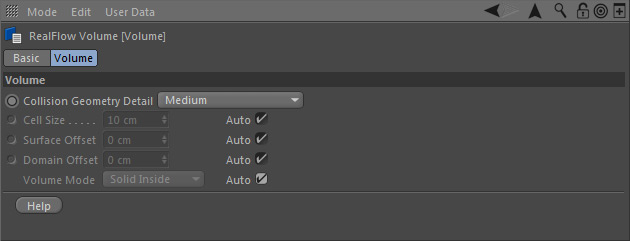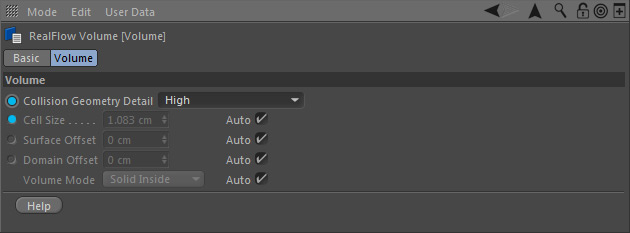Objects, meant to interact with RealFlow | Cinema 4D fluids, require "Collider" and "Volume" tags:
![]()
Objects can be parametric or polygonal. The only exceptions are:
The "Volume" tag specifies inside and outside ("Volume Mode", greyed out because of the "Auto" option) in conjunction with solid objects, e.g. closed cubes, or double-sided glasses and vases.

With single-sided objects like planes, glasses or open cubes it is not possible to make an inside-outside differentiation. Therefore the "Shell" mode is the right choice:
Cell Size * 3.It is possible to visualize RealFlow | Cinema 4D's internal collision geometry under Collider > Display > Show Collision Geometry:

RealFlow | Cinema 4D internally converts tagged objects into a grid made of cells. The size of the cells determines the quality of the grid-based representation: more cells = better transformation and accurate collision. Instead of estimating values you can choose from different quality levels and let RealFlow | Cinema 4D calculate the optimal "Cell Size":

Very large objects or a huge amount of objects with small "Cell Size" value allocate lots of RAM. This is of particular importance for simulations via the GPU, because the amount of free VRAM is typically between 4 and 8 GB and there is no fallback on the computer's RAM.
Instead of decreasing "Cell Size" to very small values it is often better to increase "Surface Offset". This parameter creates a virtual buffer or shell around an object and helps to make it watertight. With negative"Surface Offset" values it is even possible to make particles collide inside an object.